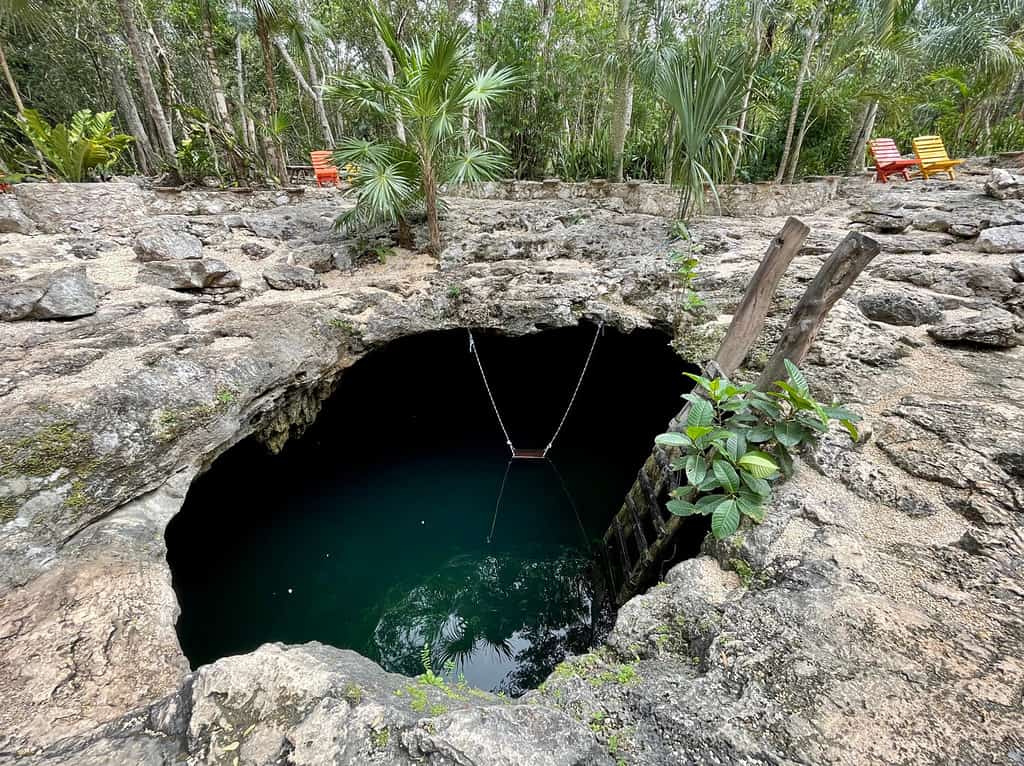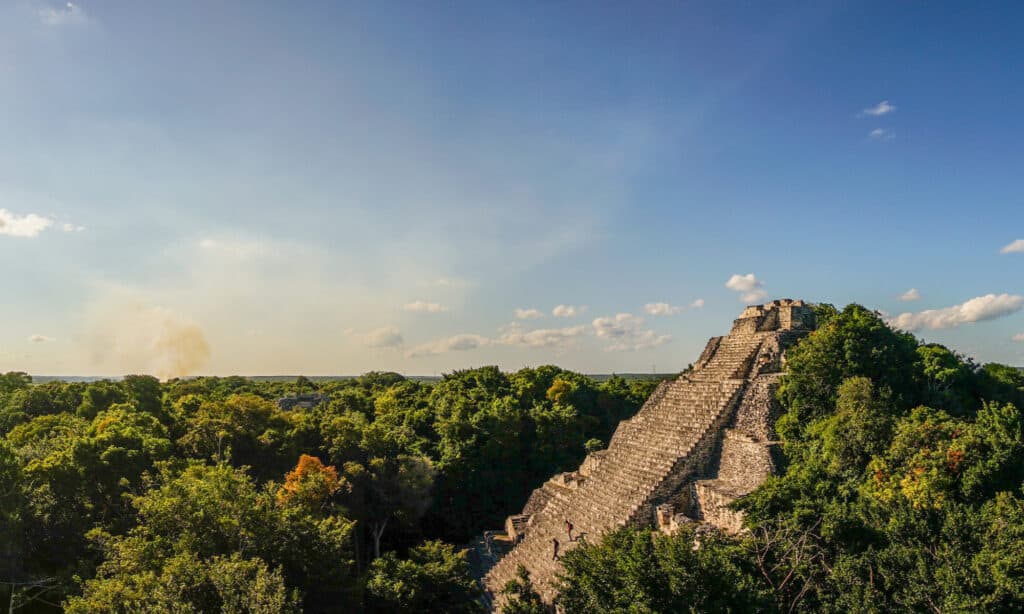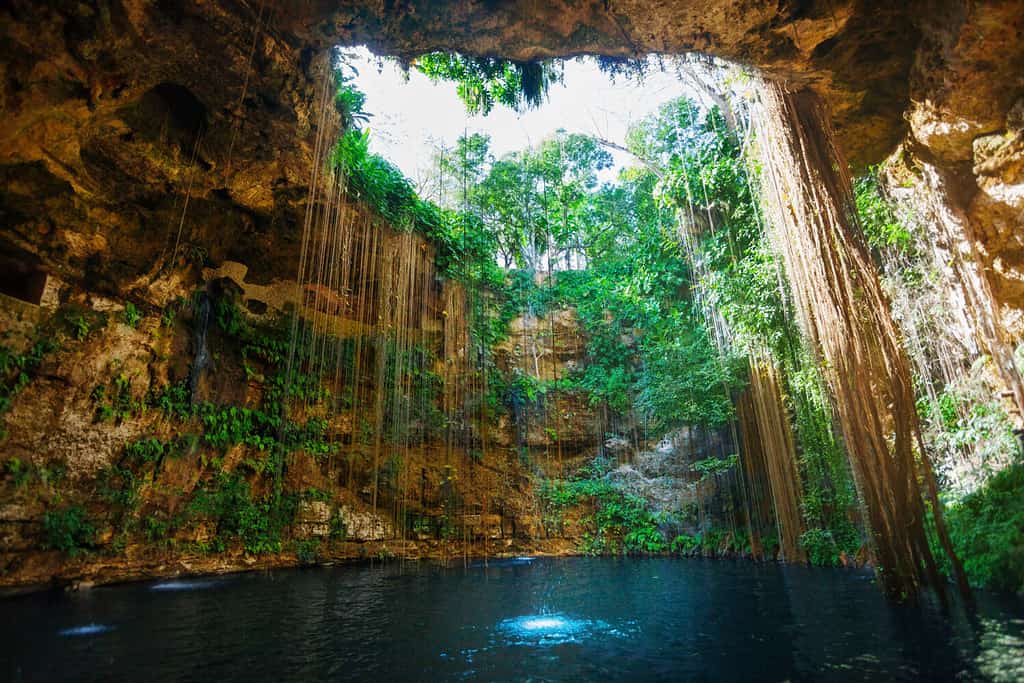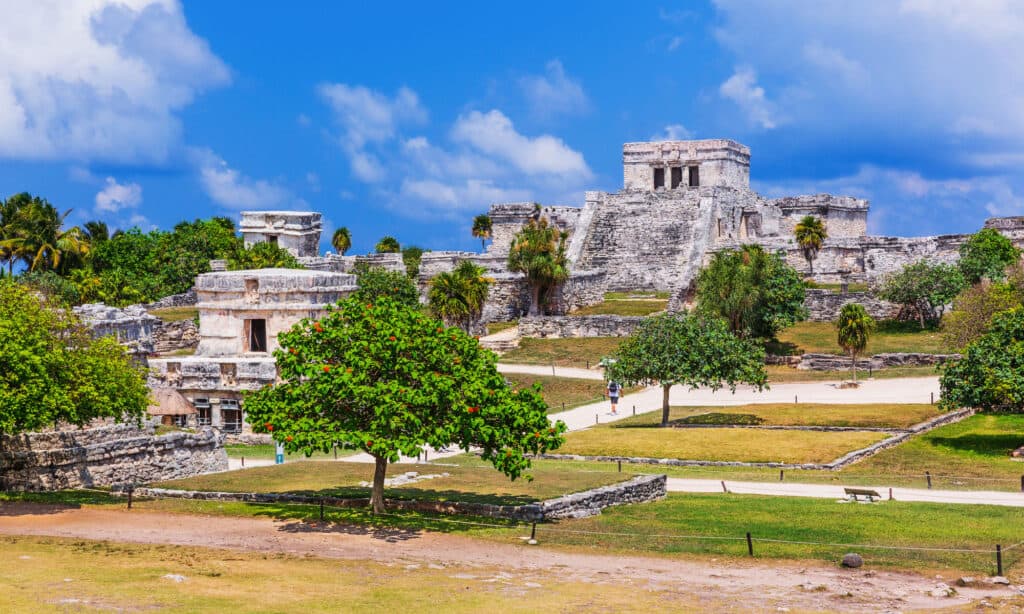Pronounced “seh-no-tay”, the cenotes in Mexico are popular travel destinations. They are a fun place to swim and feel like one with nature. However, it isn’t just their beauty that is amazing. They have a rich history and are the only reason people managed to live in the Yucatan Peninsula in ancient times.
Originally, the word “cenotes” only described the sinkholes in Mexico, but it has since been applied to similar cave and water structures in the United States, Cuba, and Australia amongst other countries. They are underground cave systems you don’t want to miss out on, wherever you visit.
To learn more about these underground water systems, including how they formed and their history, you’ll want to read until the end of this article.
What Are Cenotes?

Not all cenotes are stunning but they all offer a beautiful view of the underground and a brilliant pool of water to swim in.
©Mala Iryna/Shutterstock.com
A cenote is a chamber of water located inside a tunnel or cave. Generally, the cave opens directly up into the sky but isn’t necessarily a requirement. In simple terms, they are a sinkhole. The main difference between a regular sinkhole and a cenote is the fact that there is water underneath where the sinkhole forms.
They’ve been around for quite a long time. Research has suggested that cenotes were popular freshwater supplies for Mayan communities and occasionally used for sacrifices. Several cenotes have been found to have human remains at the bottom.
There are a few different types of Cenotes. There are ones still fully underground and not yet exposed. However, most people just tend to call these caves. Then, there are ones that are exposed to open air. Some are only partially open, showing off a little of the water. Others are fully open.
Generally, the fully open cenotes are more mature. Over time, more and more of the limestone ceiling falls and exposes the water fully.
Are Cenotes Only Found in Mexico?

The Yucatan Peninsula has thousands of cenotes.
©chrisontour84/Shutterstock.com
Cenotes are found all over the world, under a variety of different names. However, the ones in Mexico and the Yucatan Peninsula especially, have the highest number of cenotes than you will find anywhere else in the world in such a concentrated area. There are an estimated 10,000 natural cenotes across the peninsula.
Just the Sistema Sac Actun in the Riviera Maya is thought to have over 226 cenotes. There have also been bones of humans over 9,000 years old and animals from the ice age.
There are so many in Mexico because of the limestone foundation. Essentially, all of the Yucatan Peninsula is made from limestone that used to be a reef several million years ago.
Animals Found in Cenotes

You can find freshwater and sea turtles in cenotes, depending on the water type.
©pniesen/iStock via Getty Images
You may think that underground pools of water are rather empty of life. You’d be wrong. Many cenotes are connected by underground rivers. While some of them are still and calm, others have a more noticeable current. Additionally, the open air means that other animals have the chance to get into the water.
Since they are connected, there are ways animals can get in and out. Some of the common animals you can expect to find in these bodies of water are crocodiles, snappers, tarpons, moray eels, and even manatees. Turtles, catfish, and crabs are also common visitors.
If you pay attention when you go swimming under the water, you may catch sight of some of these animals. They’re often in the calmer or unpopulated part of the cenotes. But, if you get lucky, you may come across some just hanging out.
Were Cenotes Important to the Mayans?

It was cenotes that made life possible for Mayans.
©THP Creative/ via Getty Images
Cenotes were incredibly important to the Mayans. Not only were many of them a source of fresh water, but it was thought to be an entrance to “Xibalba”, known as the underworld. They were also places where people were said to find gods. Many villages and temples were built near cenotes due to their importance in providing water and a place of prayer.
As an offering to the gods, Mayans would throw many precious items into the water. Archaeologists have found items like pottery, gold, jade, and even incense at the bottom of some cenotes.
Now, many of these bodies of water are still incredibly important to the locals. While they aren’t religious sites or a source of fresh water so much anymore, they are popular tourist destinations.
The Best Cenotes to Visit in Mexico

Some of the cenotes in the area are absolutely stunning.
©Sergey Novikov/Shutterstock.com
Not all cenotes are created equal. Some are gorgeous while others aren’t much more than a small hole in the ground. To make sure you see the best of the best, you need to make sure you check out the cenotes listed below.
Two Eyes Cenote
The Two Eyes Cenote, known locally as “Dos Ojos” goes by this name because of its two pools of water. Despite residing right next to one another, they couldn’t be more different. One is crystal clear and bright blue while the other is dark and deep. Interestingly, it’s the dark and deep one that gets the most attention because you can snorkel there without any light. If you’re afraid of the dark or claustrophobic, it’s recommended you visit the slightly less popular hole.
Cenote Azul
Cenote Azul may not be exactly what you expect when you think of a cenote. It’s an ancient body of water. The limestone has crumbled so much that it’s more of a lake than a cenote. However, its circular shape is still impressive, and there’s plenty of space to swim. It may appear to be a simple lake, but it reaches over 295 feet below the surface. As the name suggests, it’s a beautiful shade of blue.
The Gran Cenote
The Gran Cenote is a beach, but underground! There’s a sandy beach, tropical foliage, and plenty of crystal-clear water. It’s one of the cenotes in the area full of life. It’s common to see turtles and fish in the area. You can dive, snorkel, and swim at your pleasure. The many options and the beach-like scenery are what make this one of the most popular cenotes in the area.
Laguna de Kaan Luum Cenote
If you want something a little different than just some water under a rock, the cenote at this laguna is sure to impress. Most of the lagoon is fairly shallow, and a perfect place to hang out and enjoy the warm water. Plenty of terrestrial and aquatic wildlife live in the area. However, in the middle of the laguna is a cenote. Essentially, it’s a drop-off from shallow water to a hole over 260 feet deep. It’s fenced off to protect anyone from falling off accidentally, and there are viewing decks to allow you to get a better view.
What Makes the Cenotes in Mexico Interesting?

Many important places were built near cenotes since they were so important to the Mayans.
©iStock.com/sorincolac
Cenotes are interesting for so many different reasons. They contain a lot of important historical information. They also were the only source of fresh water for a long time, as there are no natural above-ground lakes or rivers in the Yucatan. Without these cenotes, there would have been no water for people to drink, and no one would have been able to settle on the land until much more recent times.
They’re also just beautiful. Whether you are seeing them from the sky, or walking up to one, there’s something breathtaking about a circle of bright blue hidden among the lush green forest.
The photo featured at the top of this post is © ehgolden/Shutterstock.com
Thank you for reading! Have some feedback for us? Contact the AZ Animals editorial team.







